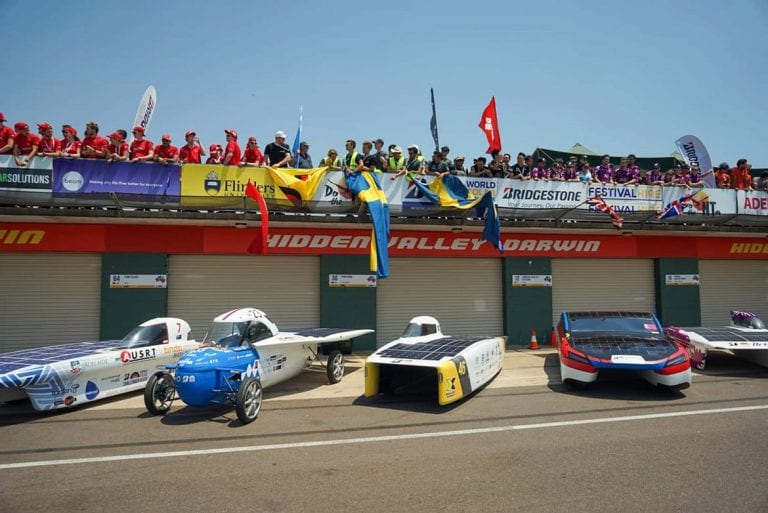Home » Industries » Case Studies » Solar cars
Solar cars
A team of students contacted Lesjöfors to assist with spring design and calculations for their car competing on the Bridgestone World Solar Challenge.
Bridgestone World Solar Challenge is a 3,000-kilometer long race in Australia with the aim of driving the development of new sustainable solar-powered vehicles forward. Students from universities all over the world participate. Lesjöfors sponsored a Swedish team with springs and calculations.
The first Bridgestone World Solar Challenge was held in 1987 and the legendary race of 3,022 kilometers crosses the outback of Australia, starting in Darwin and ending in Adelaide. In 2019, student teams from more than 30 countries participated. The only permissible source of energy is solar energy, and the race aims to develop sustainable alternatives to the fossil-fueled automotive industry further.
Sponsorship with spring expertise
In the starting field of the 2019 edition of the student race was a team from southern Sweden, Halmstad University Solar Team (HUST), who participated for the first time. The team of innovation engineering students was responsible for the whole process from designing and building the car to economy and finding sponsors and partners. The HUST team contacted Lesjöfors for assistance with spring design and calculations that are vital to the car’s road characteristics and comfort. Lesjöfors also sponsored the team with different spring products for suspension and compression springs.
Patrik Linde, MD of Lesjöfors Stockholm Fjäder/Production comments on the sponsorship: “We are happy to have contributed with our expertise to the project. Sustainability is a top priority also on our group’s agenda, and supporting future vehicle developers is in line with our business strategy since we have important customers in the automotive industry”.
New knowledge gained
Despite problems with the battery, where the team had to borrow and rebuild a spare battery from another university, the HUST car was on the starting line after three weeks of completion of the car. The new battery was not optimized for the HUST car, which caused reduced capacity and lower speed than planned, but the team was still able to complete the race and finished in an honorable 23rd place.
Alexander Sollin, one of the HUST members is content and grateful of the Australian adventure:
“Getting to experience driving a 500 kilometer long straight and meeting the wind speed of huge fifty-meter road trains in the Australian outback was one of many experiences one will never forget. We have met and gone through many challenges together and have gained new knowledge and experience we will carry with us for the rest of our lives.”
Related Case Studies
Lesjöfors legacy of spring craftsmanship married with material advancements and R&D programme secures engineering first.
Related Case Studies
Lesjöfors legacy of spring craftsmanship married with material advancements and R&D programme secures engineering first.
Related Case Studies
Lesjöfors legacy of spring craftsmanship married with material advancements and R&D programme secures engineering first.
Find your local partner
Find contact information for Lesjöfors and contact us for all general inquiries here.
How can we help you?
Our teams across our spring, pressing, gas spring and metal belt departments are available to help with your enquiry. Please complete the form below and one of our experts will be in touch.


